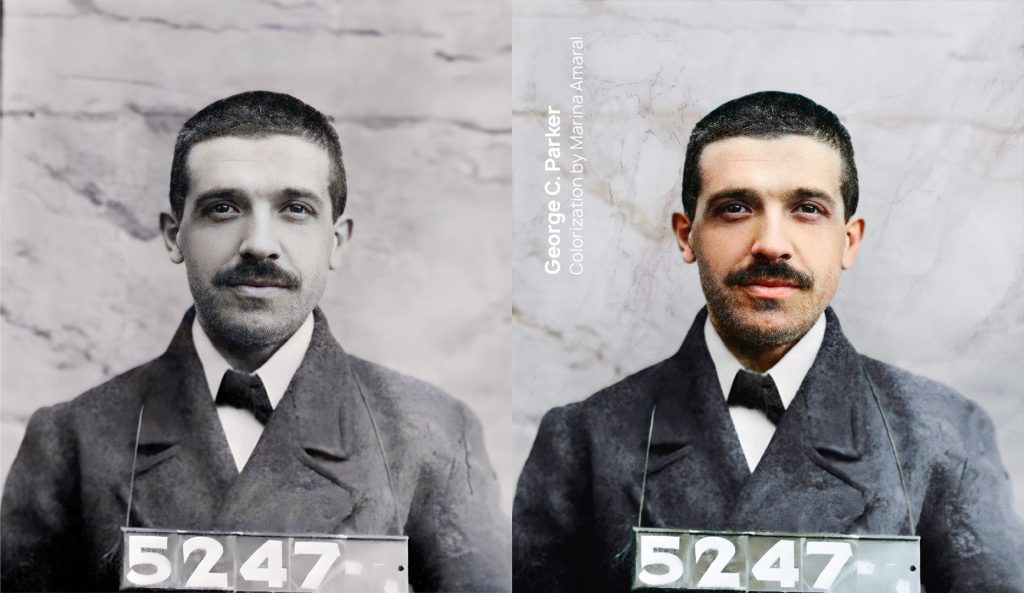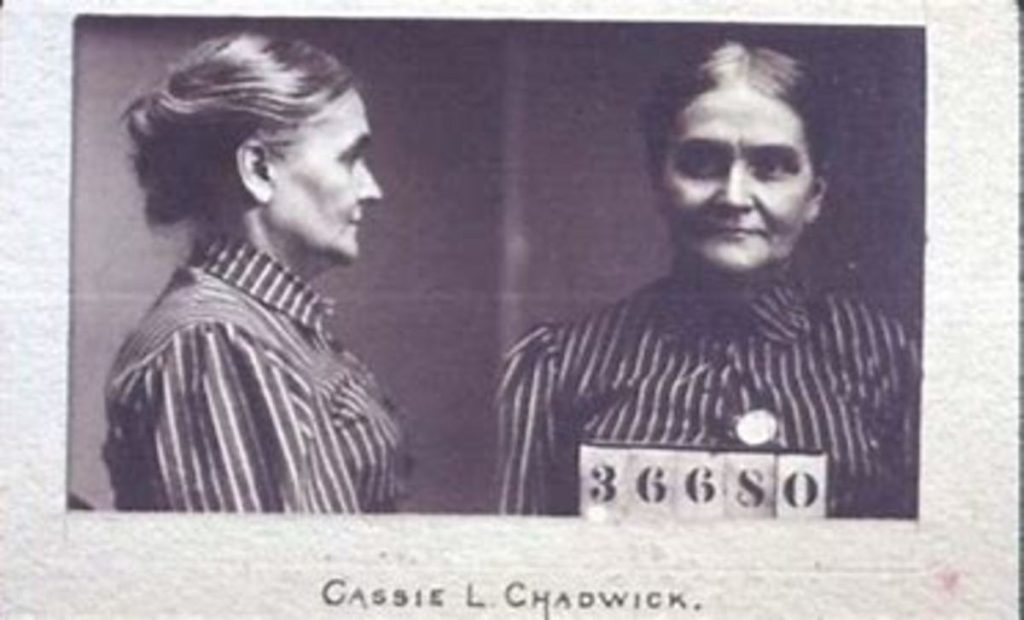10 Notorious Fraudsters Who Scammed Their Way Into History.
Throughout history, various swindlers have turned trust into personal fortune, only for their deceptive schemes to eventually crumble. As the world evolved, so did the methods of these tricksters, who adapted to technological advances and shifting economic landscapes. From classic scams to digital cons, notorious figures like Charles Ponzi, Anna Delvey, and Amanda Riley have captivated the public's imagination, leading to a cultural fascination with their exploits.
The internet, digital currencies, and social media have made it easier for con artists to deceive others on a larger scale. The likes of Belle Gibson and Amanda Riley, as well as crypto schemer Sam Bankman-Fried, have emerged in the digital age, pulling off sophisticated frauds that caused immense harm to unsuspecting victims. Their stories have been chronicled in podcasts, documentaries, and films, offering a glimpse into their unscrupulous ways.
Here are 10 of the most infamous con artists in history and the details of their schemes.
Princess Caraboo

In April 1817, Almondsbury, England, was mystified by the appearance of a woman wrapped in a shawl, wearing a colorful dress, and speaking a strange, incomprehensible language. The woman, who introduced herself as "Caraboo," claimed to be a princess from the Indian Ocean island of Javasu. She convinced many of the villagers that she had escaped from kidnappers, and her knowledge of exotic fruits like pineapples seemed to add weight to her story.
She was taken in by a local magistrate’s family, where she entertained visitors with native dances and religious rituals. However, her ruse was exposed when a landlady in nearby Bristol revealed that Princess Caraboo was actually Mary Willcocks, a young woman from Devon. Rather than facing punishment, Willcocks managed to avoid imprisonment, even convincing the magistrate’s wife to fund her trip to America. Eventually, she returned to England, married, and found stability by starting a legitimate business importing and selling leeches for medicinal use.
Phoebe Cates famously portrayed Mary Willcocks in the 1994 comedy-drama film Princess Caraboo.
George C. Parker: The Man Who Sold New York's Brooklyn Bridge

The phrase “If you believe that, I have a bridge to sell you” is believed to trace back to one of America's most notorious con artists, George C. Parker. Active during the late 19th and early 20th centuries, Parker developed a reputation for selling the Brooklyn Bridge in New York City—a monument that he didn’t own and had no authority to sell. According to Carl Sifakis’ Hoaxes and Scams, Parker had a remarkable ability to deceive unsuspecting immigrants, often luring them with promises of employment at an unbuilt toll booth. Once he had their trust, he would then convince them that they could purchase the bridge outright.
On occasion, Parker's scams led to chaotic and humorous situations. Victims, believing they had successfully acquired the bridge, would often attempt to build toll booths, only to have construction work halted by confused police who were unaware of the fraudulent transactions taking place.
Although his most famous scheme involved the Brooklyn Bridge, Parker's con artistry didn't stop there. He also sold fake deeds to other iconic landmarks such as the Statue of Liberty, Madison Square Garden, and the Metropolitan Museum of Art. However, he was most proud of his success in convincing people they could own the famed Brooklyn Bridge.
Parker’s fraudulent activities eventually caught up with him. It was a forged check that led to his arrest, marking the beginning of the end for his grifting career. In 1928, after years of deception, Parker was sentenced to life in prison. Ironically, he reportedly enjoyed his time behind bars, as younger inmates looked up to him and treated him with considerable respect.
Anna Delvey: The Heiress Who Fooled New York’s Elite

Russian-born Anna Delvey, whose real name is Anna Sorokin, became a notorious figure in New York City after she arrived in 2013, claiming to be a wealthy German heiress. Delvey had completed fashion internships in Europe, and quickly convinced many of her colleagues in the New York social scene that she was part of a prominent family with an unlimited fortune. Her persona as a sophisticated socialite covered up several glaring inconsistencies, including an inability to pay for lavish dinners and parties.
Despite this, she managed to stay in a luxurious downtown hotel for an extended period and even sought millions of dollars in loans to fund a lavish arts center using fabricated assets. The ruse ultimately unraveled when she failed to pay her hotel bills and a friend she had duped ended up with a staggering $60,000 bill for a lavish vacation they had taken together.
In October 2017, Delvey was arrested in Los Angeles. By April 2019, she was convicted on eight counts of grand larceny and theft of services. After serving two years in prison, she was transferred into the custody of U.S. Immigration and Customs Enforcement (ICE) upon her parole.
Delvey’s story became a media sensation, with Netflix reportedly paying her $320,000 for the rights to adapt her tale into the 2022 limited series Inventing Anna, where Julia Garner portrayed her onscreen. In 2024, Delvey also appeared on Dancing with the Stars, further solidifying her status as a cultural figure.
Simon Leviev: The Tinder Swindler Who Stole Hearts and Money

Simon Leviev, born Shimon Hayut in Israel, became infamous for his deceptive ways after fleeing his home country in 2011 to escape theft and forgery charges. He was imprisoned for two years in Finland for defrauding three women, but Hayut didn’t stop there. After assuming the identity of Simon Leviev, he posed as the son of Lev Leviev, a diamond mogul, to con several women he met on Tinder into giving him their credit card numbers and granting him loans, which he never repaid.
Leviev’s reign of deception came to an end in 2019 when he was apprehended in Greece and later extradited to Israel to stand trial for the 2011 charges. Despite his involvement in the massive scheme that involved an estimated $10 million stolen from unsuspecting women, Leviev served only five months in prison.
Leviev’s notorious actions were immortalized in the 2022 Netflix documentary The Tinder Swindler, which exposed his fraudulent activities to a global audience. Although the documentary led to his expulsion from dating sites and a lawsuit filed by the Leviev diamond family, Hayut has since signed with a Hollywood agent and expressed interest in starring in his own dating show.
Amanda Riley: The Woman Who Faked Cancer for Donations

Amanda Riley gained attention and sympathy online when she began documenting her supposed battle with Hodgkin’s lymphoma and later lung cancer on her blog and social media starting in 2012. As part of her deceptive scheme, Riley shaved her head to simulate the effects of chemotherapy and solicited donations from friends, family, and strangers to fund her medical care. Over the years, she amassed more than $105,000 in online donations, in addition to other forms of cash and goods.
However, it was all a fabrication—Riley never had cancer. She was ultimately caught, and in 2021, she was convicted of wire fraud for her actions. Riley was sentenced to five years in prison. Doctors have since speculated that Riley might suffer from Münchausen syndrome, a psychological disorder in which a person feigns illness or deliberately produces symptoms to gain attention and sympathy.
Riley’s story became widely known when it was featured on the 2023 podcast Scamanda, which was later adapted into a four-part miniseries that aired on ABC and Hulu.
Sam Bankman-Fried: The Crypto King Who Lost It All

In 2019, Sam Bankman-Fried launched FTX Trading, a platform for cryptocurrency investors. Within just three years, the company—which at its peak was valued at $26.5 billion—collapsed, and Bankman-Fried was left to answer for his actions. Prosecutors accused him of using customer deposits to fund his own hedge fund, purchase real estate, and make political contributions to sway crypto regulations in his favor.
In November 2023, Bankman-Fried was convicted on several charges, including wire fraud conspiracy and wire fraud. He was sentenced to serve 25 years in prison and ordered to forfeit more than $11 billion. While his legal troubles continue, reports surfaced that his parents have been consulting with lawyers linked to former President Donald Trump in an effort to explore the possibility of a presidential pardon.
























